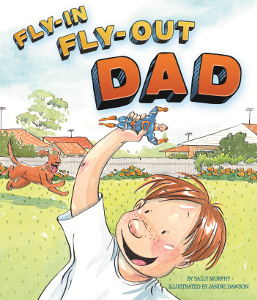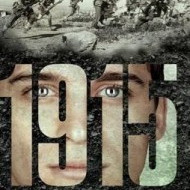So I’ve been talking lately about how I’m okay with my books making people cry, but how I’m concerned when they are classed as issues books first and foremost, so I thought perhaps I might talk a little about how I as a writer I ensure that the issue doesn’t overshadow the story. Here are my tips for planning and writing an issues-based story
- Try not to start with an issue. If you are planning to write a book about bullying, or about cancer, or about environmental degradation, then consider writing nonfiction. If it must be fiction, then work hard to ensure that the issue is explored through the story, rather than the story taking a back seat to lists of information. When I wrote Fly-In Fly-Out Dad I knew I wa
 nted to write about a family living the FIFO lifestyle, but I also knew that I couldn’t explore very aspect of that. Instead I focused on one family’s story.
nted to write about a family living the FIFO lifestyle, but I also knew that I couldn’t explore very aspect of that. Instead I focused on one family’s story. - Build characters. Whatever the issue you are exploring, the character is key! Without a strong character at the heart of the story, readers just don’t care. In Fly-In Fly-Out Dad I chose one child, Tiger (a family nickname – his name is actually Riley), and shared his version of the FIFO lifestyle. In 1915 I chose one soldier, Stanley, and followed his wartime experiences, and in my verse novels, I have always started with a character long before I knew what their particular issue was.
- Build plot. Every plot needs a conflict, and a resolution. And, along the way, ebbs and flows. In Fly-In Fly-Out Dad Tiger hopes Dad will stay home this time, but we don’t see how that resolves until the end. In the meantime we see good times, as Dad tells of his time on site, and as the family spend time together. But, every now and then, Tiger remembers that Dad might leave again. This keeps the tension mounting, and reminds us of the conflict.
- Don’t try to cover every aspect or possibility of the issue. In Fly-In Fly-Out Dad I only cover one swing (the rotation of time on site and at home – in this case 3 weeks on, 1 off), one workplace (a mine site ‘up North’), and just one family set up (Dad away, Mum and two kids at home). Trust children that they can relate it to their own experience.
- Don’t try to cram fiction with facts. The facts should appear naturally. Rather than saying ‘Dad
 sleeps in a donga, which is a transportable building….’, I have Dad telling the family about the donga, and the illustration helps here. In 1915, which is historical fiction, I worked at including dates, important battles and so on, into the action, rather than listing them. As a result, we see how these events impact the characters rather than simply being told that they happened. Show don’t tell.
sleeps in a donga, which is a transportable building….’, I have Dad telling the family about the donga, and the illustration helps here. In 1915, which is historical fiction, I worked at including dates, important battles and so on, into the action, rather than listing them. As a result, we see how these events impact the characters rather than simply being told that they happened. Show don’t tell. - Don’t tell readers how to feel. It’s a story, not a sermon. In Fly-In Fly-Out Dad readers can see that Tiger misses his dad, and that he is sad about him leaving. They may feel the same way, and may benefit from seeing their own situation reflected in a book, opening up opportunities to talk about their own lives. But they may not feel sad. Their family life might work just fine. And they shouldn’t feel that Tiger’s experience has to be theirs, which leads me to my final point.
- Issues fiction works best when it is written for a wider audience than those facing the situation. When you make the story interesting for people who haven’t had that experience, it also seems to work better for people who have. You don’t have to have a FIFO dad (or mum) to connect with Tiger’s family. You don’t have to have lost a grandmother, to connect with Pearl. And that’s because the character comes before the issue (see points one and two above).
I started with bemoaning being termed an issues writer. To be honest, I’m proud of writing about issues which impact young people. But I hope that this works because my first aim is to write stories which they enjoy, about characters they can connect with.